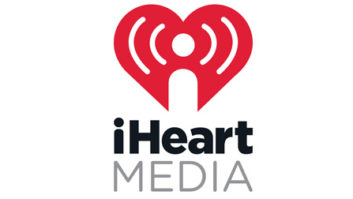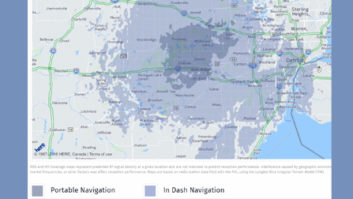Rob Green The author is vice president, streaming, for WideOrbit.

Programmatic’s public profile is growing fast, and the industry is abuzz with hopes, dreams and fears about what it means for radio.
While many see programmatic as an opportunity for their business to mine a new sales channel, the sheer number of vendors, solutions and articles flinging the word around has also created a lot of confusion. At the NAB Show and in daily conversations, many of our radio customers have asked, “What the heck is programmatic and what does it mean to me?”
DEFINE PROGRAMMATIC
Sensing a gold rush, every vendor seems to have rolled their own definition of a programmatic solution, which has confused many in the industry about what programmatic is and the problem it addresses.
Let’s get on the same page with a common definition.
When we discuss it, programmatic has three major elements. It’s a media platform for transactions that:
• are fully automated by software connecting buyers and sellers;
• use data to provide advertisers and agencies with targeted audience buying and consumer-led analytics;
• price ad units based on market supply and demand.
WHAT PROBLEM DOES IT SOLVE?
First and foremost, programmatic opens the door to a new set of advertisers to assess and potentially purchase your inventory.
From a buyer’s view, the radio landscape is incredibly fragmented and thus difficult to buy at scale; it costs them the same in productivity to buy a spot from one station as it does to go to a group of 200 outlets. Since performing many small buys is expensive for both buyer and sellers, most small media outlets are bypassed by buyers in charge of placing national advertising campaigns. In fact, the demand side may never even learn that your valuable, highly targeted inventory exists. They simply can’t see it or find it.
Dollars arriving through programmatic should be thought of as incremental to existing channels, rather than as a replacement. Radio businesses can maximize profit from finite resources when demand increases and they have tools at their disposal for managing the revenue mix. Increasing demand from programmatic sales will allow station managers to form their own unique combination of revenue opportunities that maximize the total revenue from their direct sales forces, ad networks and programmatic demand.
NOT A RACE TO THE BOTTOM
Careful readers will notice “Real-Time Buying” is not part of our definition of “programmatic.” The great unstated fear when media owners ask about programmatic is that RTB will generate a “bidding to the bottom” scenario for radio advertising, as it did for publishing.
In the digital space, the term RTB is used interchangeably with programmatic, but this is not true across all media forms. RTB transactions are actually a subset of programmatic advertising. In radio, RTB may not even be feasible; we expect that, for the foreseeable future, a human will still be involved in transactions for creative approvals, at minimum.
Sellers should also bear in mind that new programmatic platforms are not designed around eBay-style auction rules. Rather, they let sellers establish their own rules of sale. The best programmatic platforms let sellers establish pricing floors, increase per impression revenue and control the right to accept, reject or ignore any offer.
Responsible vendors know that media owners have spent years, even decades, building their brand and identity. Make sure that your programmatic vendor’s incentives are aligned with yours. They should bring an attitude that it’s their job to help media sellers create value.
TAKE FROM THE COMPETITION
Participating in programmatic reframes the competition for ad dollars. In a world where data allows comparison of audiences and effectiveness across media formats, radio stations are no longer competing only against each other for advertising dollars. They are competing against every other media option out there: digital, TV, out-of-home and literally hundreds of others. So long as radio only sells on the basis of blunt demographic data like age and gender, it will not be in the running for digital dollars.
Programmatic allows the introduction of buyer-side data so inventory can be evaluated on the same basis as competing media. And that will create more opportunities to sell spots with forward guarantees and with a better understanding of the perceived value to buyers.
The wider array of data will also help sellers understand whether they are offering disproportionately valuable audiences for too little; in other words, too much success might be indicative that stations are selling audiences for a bargain price. Today, they have no way of knowing.
PLAN OF ACTION
To stay ahead of the curve, we recommend that every media seller start experimenting with programmatic today. While it’s unlikely in the near term to make a huge difference to the bottom line, it will pay dividends later to understand the market, the technology, the workflow and advertisers’ expectations. Broadcasters and networks that embrace hybrid direct-programmatic business models will have an early mover advantage.
One other immediate step mid-size and large station groups can take is to start breaking out digital impressions from their linear inventory. This will allow them to easily market their digital audiences’ value with the targeting parameters that digital buyers are accustomed to, like device type and geographic and behavioral attributes.
Here we have focused on revenue enhancements. There are many other reasons that programmatic will benefit radio stations. We expect stations and groups to enjoy greater control over yields; reduced labor costs; and simplified inventory management, reporting and reconciliation.
Programmatic is an opportunity for radio to grow its overall revenue right now by availing inventory to more advertisers, removing barriers to buying, and allowing station groups to compete on an equal footing with competing media. Early movers have a chance to learn about managing their revenue mix and integrating new workflows, and will have competitive advantage over their fellow stations. Look for programmatic solutions that enhance the value your inventory and make it accessible to the greatest number of interested buyers.
Comment on this or any story. Email[email protected].
Rob Green is VP Streaming at WideOrbit and leads the development of the company’s digital streaming audio products. He was CEO of Abacast before its acquisition by WideOrbit in 2010. He has also held positions at Microsoft, Nine Systems, Buy DRM, Imagine Communications and Sterling Commerce (IBM).












